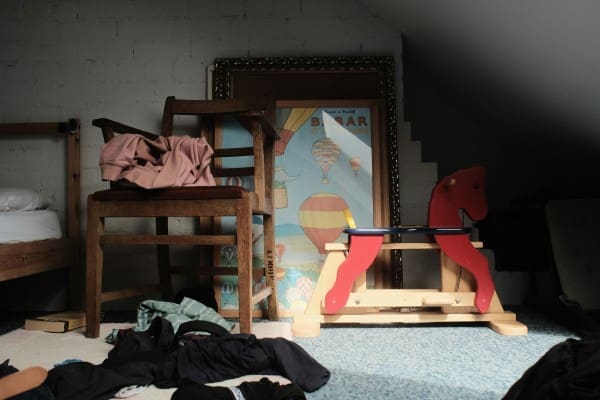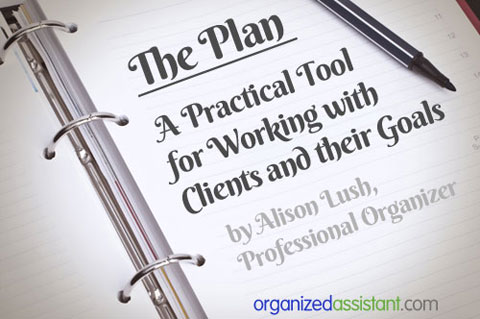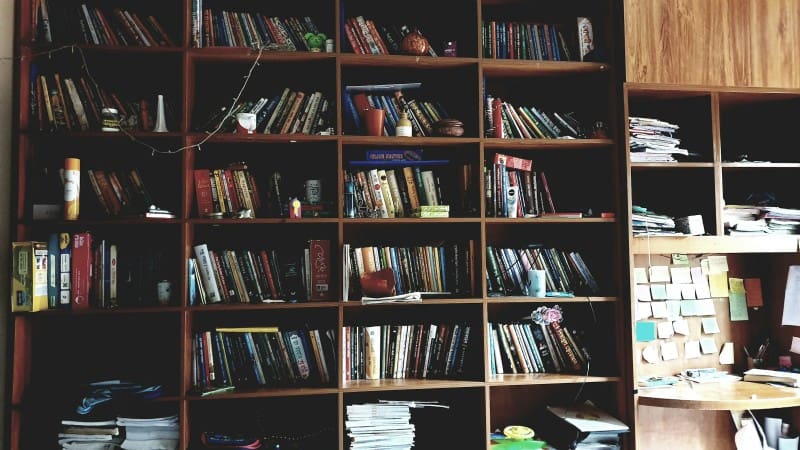Trying the Chaos Method With Clients to Streamline Their Organizing
This page may contain links to Amazon.com or other sites from which I may receive commission on purchases you make after clicking on such links. Read my full Disclosure Policy

Many see structure as the opposite of chaos, but the chaos method for decluttering says otherwise. It embraces the mess to create order and make space for the essentials. Here’s how you can try this method with your clients.
What Is the Chaos Method?
The chaos method was introduced by professional organizer Kim Jones, who described the technique in an interview with The Kitchn. It’s originally a technique to unpack after a move, but it’s also helpful for general decluttering and tidying. You empty every cabinet, box, wrapper, container, bag, or cupboard in a room or house, then organize and put them in their places.
This technique can sound like a lot — it gets worse before it gets better. However, the initial mess of this decluttering strategy encourages you to confront all your belongings and see what you need to let go of or keep. Doing so helps create a more organized space that improves focus and reduces stress.
How to Use the Chaos Method
Simplicity works best with clients — thankfully, the chaos method can be easy to introduce. Here‘s a breakdown to make the most out of this technique.
Take It All Out
The first step to chaos organizing is taking everything out. What “everything” means is up to you and your client. If they are new to decluttering or have a large space, it might be best to focus on one or two rooms at a time to minimize overwhelm.
Once you’ve chosen an area, remove all items from the bins, cupboards, bags or drawers. Lay them out on a table, countertop or floor. This process reveals everything in the space and might stress some people out, but don’t give up. Everything will soon go back to its proper place.
This is the hardest step for many who have tried the chaos method. Confronting everything you have can be challenging, especially if you haven’t decluttered your space in a while.

Sort Into Categories
Once everything is out, it’s time to sort it. Divide the room into zones for different item categories. You can also use bins for smaller things like clothes — sticky notes and labels can come in handy for this step. Then, go through your giant pile of items and place them in their appropriate spots.
For example, if you’re using the chaos method to organize your closet, create piles for coats, shoes, t-shirts, pants and other relevant categories. This step allows your client to gain more control over the initial mess and see how much they have.
Declutter
During or after sorting the items, your client can start decluttering. You can create three additional piles for items you plan to donate, recycle or throw away.
Once everything is in respective piles, deal with these three categories first — take out the trash, put the items to donate in your car or another room, and place the recyclables in the garage or designated bin. Removing them before organizing takes out the temptation to bring them back into the space.
Reorganize
After decluttering, it’s time to organize what’s left behind in a way that makes sense with your client’s lifestyle. For example, you can place the most-used items on a more accessible or open shelf, while seasonal objects or appliances could be more hidden.
You can also use this step to refresh and deep clean the space. Open a window to improve air quality, or vacuum and wipe down surfaces to freshen them up and make them look better. With everything clean and in its rightful place, the chaos decluttering method is complete.
Tips on Helping Clients Declutter
Decluttering is often a major project, which is why people have enlisted your help as a professional. Here are some tips to ease them into the process and help them successfully declutter their spaces.
Acknowledge and Empathize
Decluttering and organizing might come as second nature to some. However, this isn’t always the case for many, especially if they’ve grown attached to most of their stuff.
Empathy can be incredibly helpful in this process, as decluttering can be emotional. Avoid referring to their things as “clutter,” “junk” or anything negative. Instead, focus on how the process can create more space to enjoy life.
Focus on the Big Picture
Visualizing the result can help clients be more open to letting go of what they don’t need. Help them see the importance of decluttering by looking at inspirational photos or drawing up a plan. Looking at space as it is alongside what it can become encourages them to see what they have in excess and how decluttering can help them achieve their dream space.
You can also stress the benefits of keeping a clean and clutter-free home. A recent survey by the American Cleaning Institute found that 88% of Americans feel physically and mentally better when they have clean surroundings.
From Chaos to Order
Despite its name, the chaos method can be an excellent strategy to bring order to a cluttered home. Leaning into the mess helps clients better understand and manage their organization and consumption habits. With empathy and guidance, you can help them make sense of their stuff and build systems that work for their lifestyle.
Photos by Sarah Brown and Robin Battison via Unsplash




I haven’t heard this approach called the chaos method before. Interesting! I think many professional organizers use this type of approach. I know it always helps me to “see it all” so I don’t end up organizing a space, only to find out later that a bunch of other items belong there that we didn’t originally consider.
At the same time, I think taking everything out is helpful, but if there is a huge space, it may be too much to work on at once. That’s why I love that decluttering and organizing projects can be customized to fit the needs of the individual.
You make a good point. It seems that emptying every storage area in a kitchen or bedroom could lead to a project that’s too overwhelming and/or time-consuming to complete the same day. You could leave something like a craft room in chaos for a couple of days, but not a main living area.
Rose’s description of Kim Jones’ Chaos Method is certainly eye-opening, but I can’t imagine employing it for unpacking a whole house. That’s terrifying.
I’ll admit I have used this with clients when there was no apparent rhyme or reason to what was being kept in a certain room or zone. Literally picking up each thing, identifying a category, putting it in a zone and continuing until if you’ve touched and moved everything in a space (or even a room) can work, but I’d be disinclined to ever use this method on a larger space for fear that it could not be completed within a session’s time frame. (Rule #1: always leave the space looking more organized than when we started!) I definitely can’t imagine doing this with a clothes closet because I wouldn’t want hanging clothes to ever get piled on the bed or floor, but it would definitely work for overhauling an entire chest of drawers.
This is definitely an intriguing approach, but I think I’d have to see it in practice before I would embrace it for anything larger than a laundry room or linen closet. I appreciate Rose sharing it here.
Although I can see the advantages of this method in that you find EVERYTHING that goes together before putting it in its new home, I also think it wouldn’t be practical for organizing a whole house, or even most rooms, for the reasons you say.
I agree with Seana. I never heard of it being called The Chaos Method either. I too use this method.
I worked with clients who had smaller homes most of the time, and removing items completely from the space to review was challenging. So, we would take things out of smaller areas like a small closet, a small kitchen, etc… and make sure it was a project we could get done within 4 hours, so the client wasn’t left with a partially done decluttering project. Early in the 1990s, I found that it was too exhausting for me and my clients to undertake large projects, so I developed 4-hour projects for my business.
Four hours is a good limit! Anything over that can be tiring, physically, mentally, and emotionally, so it will be that much harder for the client to make good decisions.
I also use this method on a smaller scale with clients, although I have not heard it called the Chaos Method. I reassure clients that things may seem worse ( more chaotic) before it gets better. I can see the benefit, after a move, of bringing everything that is supposed to fit in a room or space all there at once so the person understands how much needs to be unpacked. A lot of times, people try to unpack and have things in the same spot in the new house as it was in the old house and the new house doesn’t have the same spaces, closets and shelves. So people need to think in a new way about where things have to go. The problem is people want things to be unpacked quickly and don’t necessarily want to see it all out of the boxes in chaos in the room right after a move. I guess I need to think about this idea more.
Moving can be so challenging! I once helped a woman unpack when she moved from a townhouse to an apartment. I know she sold and gave away a lot before she moved, but she still had way too much stuff. Maybe seeing everything out at once would have helped her see the futility of the situation!
The Chaos Method reminds me a bit of Marie Kondo’s strategy which involves collecting all of one category together to then decide what stays or what goes. For the client demographic I most frequently work with (chronicallly disorganized), this Chaos Method would add to the already overwhelmed state they are experiencing. Instead, doing small areas at a time (a closet, drawer, or surface) works better.
I understand how the Chaos Method could be helpful in some instances, but in general, it wouldn’t be one I’d recommend to my clients.
That makes total sense, Linda.